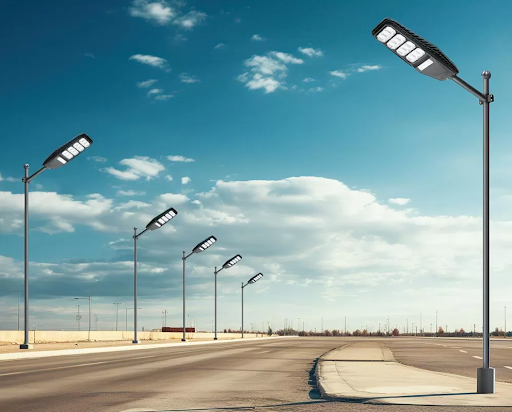Solar street lights are no longer just experimental add-ons; they are a mature urban and rural lighting solution that can replace grid dependence with predictable, low-cost assets. When purchasing solar street lights, it is essential to clearly understand the technical specifications (LED power, PV array size, battery capacity, and controller functionality), the actual installation costs, and how to calculate the site’s return on investment (ROI). Make your purchase based on data, not guesswork. Decision-makers who follow a rigorous specification and modeling approach typically reduce lifecycle costs by 20-40% compared to ad hoc purchases and avoid the operational challenges of undersizing the system.
Required Specifications and Key Components for Solar Street Lights
When purchasing solar street lights, the main components to evaluate include the PV modules, LED fixtures, battery system, controller/charger, mounting pole, and supporting hardware. Each component impacts performance and lifespan.
For PV modules, specify module power, efficiency, temperature coefficient, and IEC/UL certification. Higher module efficiency saves rack space; a lower temperature coefficient maintains output power in hot climates. LED luminaires require evaluation of rated lumen output, lumens per watt (lm/W), light distribution, and color. Select LED modules with an L70 rating of 50,000 hours or longer, and provide LM80 or TM-21 reports whenever possible. Battery systems require specification of battery chemistry, available capacity, allowable depth of discharge, cycle life at a specified DoD, and BMS functionality. Controllers/intelligent management systems should also include MPPT charging and programmable dimming solutions. Finally, explicit performance guarantees are required. These include a minimum operating time at the specified lumen output for a defined site solar resource, as well as a service level agreement (SLA) specifying response times for failures and parts replacement.
Solar Street Light Sizing and Design
Sizing determines whether a solar street light can achieve its lighting and reliability goals. This test examines the relationship between LED energy consumption and nighttime operation, considering PV size and battery capacity, while adjusting for local peak sunlight hours and system losses.
First, determine the lighting requirements. Determine the nominal LED power (in watts) and the average nighttime operating time. Next, select the battery life. Urban deployments typically require 1-3 days; remote areas require 3-5 days. If the battery life is 3 days, the required battery capacity = 600 Wh/day × 3 = 1,800 Wh of available energy. Next, select the battery depth of discharge and efficiency. Determine the PV array size based on the local peak sunshine hours (PSH). Assume an average PSH of 4 hours per day. Consider system losses and verify the charging current and controller rating. The PV short-circuit current and MPPT current must exceed the expected module current. The controller should support MPPT with a margin. Finally, confirm the pole location and shading to ensure the modules receive sufficient sunlight, maximizing energy capture.
Solar Street Light Costs: Equipment, Installation, and Maintenance Details
Understanding the cost components allows for a transparent comparison of quotes. Costs are primarily categorized into three categories: capital expenditure (CapEx), installation and commissioning, and ongoing operations and maintenance (OpEx).
Typical capital expenditures (equipment) include PV panels sized by wattage, with prices varying by quality and brand. Wattage, optics, and innovative features determine the prices of LED luminares. The battery pack is typically the most significant single cost driver; LiFePO₄ has higher capital expenditures but lower lifetime replacement rates. Installation and commissioning include civil engineering and foundation construction, electrical installation, wiring, and lightning protection, system commissioning, and performance verification. A sample cost range for a small urban solar streetlight node (60W LED, 200W PV, 2.5kWh lithium battery, pole, and mounting) is $2,000 to $4,500 per pole.
Return on Investment for Solar Streetlights
Good buyers use payback period, levelized cost of energy, and lifetime total cost of ownership to calculate return on investment. Here are some practical and conservative calculation methods: Payback period (years) = Net installation cost ÷ Annual energy cost savings. Estimate annual savings as the avoided utility costs for equivalent lighting (kWh/year x retail electricity price), plus avoided distribution/connection fees, or diesel costs avoided when replacing generators. Therefore, you must include additional value streams. Solar power can avoid the cost of civil electrification (trenching and grid connection), which can cost thousands of dollars per pole in new developments. For remote areas using diesel generators, fuel savings can significantly improve returns.
